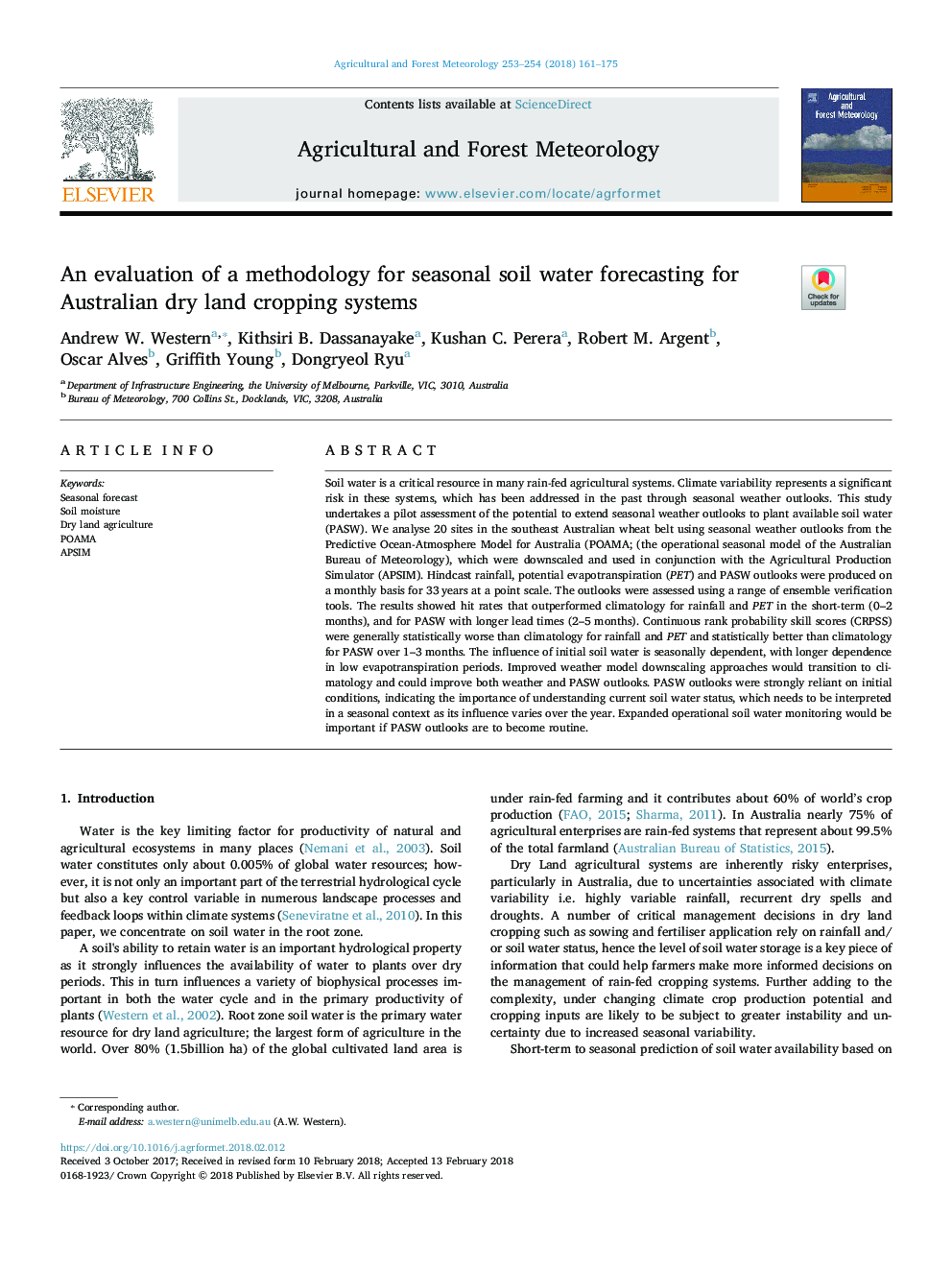| Article ID | Journal | Published Year | Pages | File Type |
|---|---|---|---|---|
| 6536747 | Agricultural and Forest Meteorology | 2018 | 15 Pages |
Abstract
Soil water is a critical resource in many rain-fed agricultural systems. Climate variability represents a significant risk in these systems, which has been addressed in the past through seasonal weather outlooks. This study undertakes a pilot assessment of the potential to extend seasonal weather outlooks to plant available soil water (PASW). We analyse 20 sites in the southeast Australian wheat belt using seasonal weather outlooks from the Predictive Ocean-Atmosphere Model for Australia (POAMA; (the operational seasonal model of the Australian Bureau of Meteorology), which were downscaled and used in conjunction with the Agricultural Production Simulator (APSIM). Hindcast rainfall, potential evapotranspiration (PET) and PASW outlooks were produced on a monthly basis for 33â¯years at a point scale. The outlooks were assessed using a range of ensemble verification tools. The results showed hit rates that outperformed climatology for rainfall and PET in the short-term (0-2 months), and for PASW with longer lead times (2-5 months). Continuous rank probability skill scores (CRPSS) were generally statistically worse than climatology for rainfall and PET and statistically better than climatology for PASW over 1-3 months. The influence of initial soil water is seasonally dependent, with longer dependence in low evapotranspiration periods. Improved weather model downscaling approaches would transition to climatology and could improve both weather and PASW outlooks. PASW outlooks were strongly reliant on initial conditions, indicating the importance of understanding current soil water status, which needs to be interpreted in a seasonal context as its influence varies over the year. Expanded operational soil water monitoring would be important if PASW outlooks are to become routine.
Related Topics
Physical Sciences and Engineering
Earth and Planetary Sciences
Atmospheric Science
Authors
Andrew W. Western, Kithsiri B. Dassanayake, Kushan C. Perera, Robert M. Argent, Oscar Alves, Griffith Young, Dongryeol Ryu,
